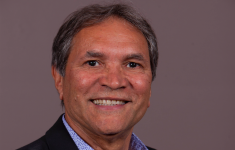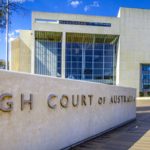Rethinking Closing the Gap: An Interview With NCAFP Co-Chair Rod Little

The Close the Gap Statement of Intent was issued by the Rudd government in early 2008 with bipartisan support. Its stated aim is achieving “equality in health status and life expectancy between Aboriginal and Torres Strait Islander peoples and non-Indigenous Australians by the year 2030.”
The Council of Australian Governments (COAG) launched the Closing the Gap Strategy the following year. It set seven key targets aimed at improving the health of First Nations peoples.
Last week, the Close the Gap Steering Committee released its ten-year review of the strategy, which found that successive governments have so far failed to succeed in closing the health gap.
Indeed, the review outlined that a December 2017 Australian Institute of Health and Welfare report found that life expectancy and mortality gaps are actually widening. And another key finding was that First Peoples “have, on average, 2.3 times the disease burden of non-Indigenous people.”
Less than half the targets
On Monday, the Prime Minister’s 2018 Closing the Gap report was released. The coverage was more positive this year than it was the year prior, as it was reported that three out of the seven key targets are now on track, compared with only one last year.
The targets said to have been achieved are halving the gap in year 12 attainment rates by 2020, halving the gap in child mortality by 2018, and ensuring that 98 percent of Indigenous four-year-olds are enrolled in early childhood education by 2025.
The targets that aren’t on track include three to have been achieved by this year, which are halving the gap in reading, writing and numeracy, closing the gap in school attendance, and halving the disparity in employment outcomes.
The fourth target area that isn’t on track is the goal of life expectancy equality by 2030.
Many commentators have pointed out that a major setback in the Closing the Gap framework is that it fails to address urgent matters, such as Indigenous incarceration rates, deaths in custody, and forced child removals.
Refreshing the strategy
Sixty Indigenous leaders from around the country met with the federal government in Canberra last week for talks regarding an overhaul of the strategy. And a range of new target areas were discussed, as well as the need to revive current goals.
Co-Chair of the National Congress of Australia’s First Peoples (NCAFP) Rod Little was one of the delegates at the refresh gathering. The Amangu and Wajuk man began his involvement with the Congress when he became a director back in 2011.
The NCAFP is a peak Aboriginal and Torres Strait Islander national representative body. It was established in April 2010 and counts 180 organisations and 9,000 individuals as members.
Sydney Criminal Lawyers® spoke with Mr Little about the reasons why the Closing the Gap Strategy isn’t working, the realities behind the prime minister’s recent report, and the framework that’s set out in the Redfern Statement.
Firstly, Mr Little, the Close the Gap Steering Committee’s review found that the government’s strategy is not working.
Broadly speaking, what are the main reasons the Closing the Gap strategy isn’t succeeding at present?
One of the main reasons is that the systems weren’t staying true to the approach. We did a review and found that they’d fundamentally dropped the ball five years in. So, that means the government has a lack of commitment to the Close the Gap Statement of Intent.
Some of the factors that contributed to that are changes of government, and reductions in funding. And also, the lack of Aboriginal and Torres Strait Islander professionals, and community services organisations involved in the design and development of the policies, programs and the implementation of strategies, plus the monitoring and reviewing processes.
They forgot that the expertise is there to do it. The Close the Gap Steering Committee is made up of non-Indigenous and Indigenous health professionals across the sector. There is some very good advice there.
It’s one of those bodies that has stayed in place. It’s independent of government funding. And these are people with some good insights, experience and professionalism to see what is going on, and what is needed.
There’s been recommendation after recommendation, year after year, stating that things have been going off track. And the right people have not been involved in the approach.
For years now, Aboriginal and Torres Strait Islander individuals and organisations have emphasised the importance of First Peoples being at the forefront of decision-making processes that affect them.
Just how far has the Closing the Gap strategy fallen short of this requirement?
It came to a crisis point a couple of years ago. The National Congress and the Redfern Statement Alliance stated that in all of these areas something had to be done. And there had to be a wake-up call to the government that this needs to be redressed.
And it needed to be done quickly, because all of the targets weren’t on track. They were actually widening.
The government didn’t react extensively to the Redfern Statement. But, if you make a line of sight with the Redfern Statement and the Closing the Gap targets, they’re saying the same things, like having our peoples involved in the decision-making, the design, the implementation and the measuring of outcomes.
That’s still one of the problems. It’s clear that we’re not front and centre of this whole thing, even with the Closing the Gap refresh approach.
There was a meeting last week with state and territory nominated Indigenous representatives, and it was clear again that we need to be driving this change.
As you just mentioned, Indigenous leaders met with politicians in Canberra last week for talks regarding a refresh of the strategy.
Overall, what did First Nations leaders recommend should take place?
First of all, it should retain the existing targets because they definitely need to be met. But, they need to be done with our lead, so that we’re confident that these matters are addressed.
The other is to add some additional matters into the Closing the Gap framework. That was around children in out-of-home care. We know how the terrible statistics are there. And incarceration rate statistics are an embarrassment internationally, as well as nationally. And the other is a fundamental rights matter around housing.
All of those things are affecting Aboriginal and Torres Strait Islander peoples’ health. To enable them to have equal health, then these things really need to be picked up and taken on board.
Out of the Closing the Gap meeting, there was a delegation that went and sat with COAG. I was one of the ten.
We produced a statement that was about priorities. There must be an accountability process that is driven by us, so that we can all agree that we are measuring and are accountable for the same thing.
We must also have meaningful data that is being reported from all governments, and from our community-controlled service providers.
And then there were the following areas of importance that we saw would contribute to the success of Closing the Gap. These included family, children and youth, housing, justice, health, economic and development impact, culture and language, education, and healing.
All of these aspects, as well as the targets in the existing Closing the Gap, must really be looked at.
One of the critical areas, we’ve been saying for such a long time, is the elimination of racism and systemic discrimination. That’s one we’ve been talking about for decades.
But, there hasn’t been an appetite to take it up and address, or even explore, what the difficulties are, and the systemic things that need to change.
On Monday, the prime minister released his report, which stated that three out of seven key targets are on track, compared with only one last year.
What’s the response of the National Congress to the PM’s report, and the fact that less than half of the targets aren’t being met?
It’s an ambiguous claim. Because for things to be going from crisis point to three being back on track in just over 12 months is a matter of interpretation.
What real action was taken to get them back on track? We don’t know. The refresh hasn’t fixed or put them back on track. The discussions haven’t put them back on track.
On page 19 of the report, there’s a claim that they’re working with the Congress and the Redfern Statement Alliance to do the refresh. But, again it’s the government leading the process, and making an interpretation of the findings without getting clarification or confirmation as to whether it is truthful, or we might have a different view on it.
But, we need to land on a commensurate view about what has improved, what hasn’t, and why.
The Steering Committee review also points out that it’s time to address the funding myths that continue to plague Aboriginal and Torres Strait Islander affairs. Can you outline what these myths are?
There’s a misconception that all this money is being dumped into the hands of Aboriginal and Torres Strait Islander peoples, and services and organisations. But, that’s not the case. A lot of the money goes to mainstream services, like health systems, and state and territories.
The Commonwealth government funds community health services, but the states and territories actually receive money to assist and enable the Closing of the Gap. That’s where some of the difficulties are for interpreting the effect of that investment.
That really needs to have some kind of cost benefit analysis and accountability regime structured around it. So, we can be asking the questions about how do we know the investment is hitting the mark or having an impact, and is changing somebody’s health status. We need to build that story.
At the moment, the data is skewed as it gets aggregated, and it misrepresents actual things that are happening on the ground.
The things that the review was saying were make sure that we get back to the real importance of the Statement of Intent. The principles within that petered out over the first five years.
But, also to engage properly with Aboriginal and Torres Strait Islander peoples, so it is not rushed. And so we can keep our finger on the pulse and see what the likely impact will be, when things drift off a little, or there’s a reduction in funding.
And if there’s an improvement, we should continue to focus on that, and fund its necessary requirements.
The other thing is agreeing to work together on an accountability framework, so that we can ask these questions to get some assurance, affirm the outcomes and affirm when something is going off track.
And lastly, you’ve touched on this already. But, on June 16 2016, a group of peak Aboriginal and Torres Strait Islander representative organisations released the Redfern Statement.
This document provided a framework to encourage a maturing of relations between First Nations peoples and non-Indigenous people. What’s outlined in the statement?
It is about strengthening the relationship fundamentally with the Parliament of Australia. Because, changing governments lead to changing views and information about what people think that we need.
The proposition is to allow Aboriginal and Torres Strait Islander peoples to be in the decision-making process with the view that if we address these Closing the Gap matters, and the additional ones, this can be a return investment for parliament, but also for the whole of Australia.
Because, we’re getting people healthy to participate in the economy, and employing people to deliver services to enable that to happen.
So, all those getting jobs and returning to good health or getting a good education, they participate in the economy and they’re contributing through their taxes and purchasing of goods and services.
There’s a real need to shift the thinking. Rather than just throwing money at a perceived problem, and then expecting the dollars to fix it. The strategies and approaches need to be reviewed. And it needs to be done through a commitment from the Parliament of Australia, but also, other jurisdictions as well.
Congress is participating in it. The Congress was established to do this function- to be the conduit between government, Aboriginal and Torres Strait Islander peoples, and their organisations. We firmly believe that is one of the ways that we can make improvements for our people across the nation.
And one of the critical points is that the data can be skewed when you talk about the imprisonment population. There are many Aboriginal and Torres Strait Islander people that are employed or going to school – that are achieving.
So, the projection is that over half a million Aboriginal people – or the 3 percent – are all dependent, when in fact, we aren’t. If we look at the 3 percent, and you drill down to those who have the most need, then it shouldn’t be so difficult to fix.
That’s coming from a different view from the government’s and the way that data is projecting our dependency on welfare.
If there was effective employment, education and health services, then there wouldn’t be a drain on those other services.







